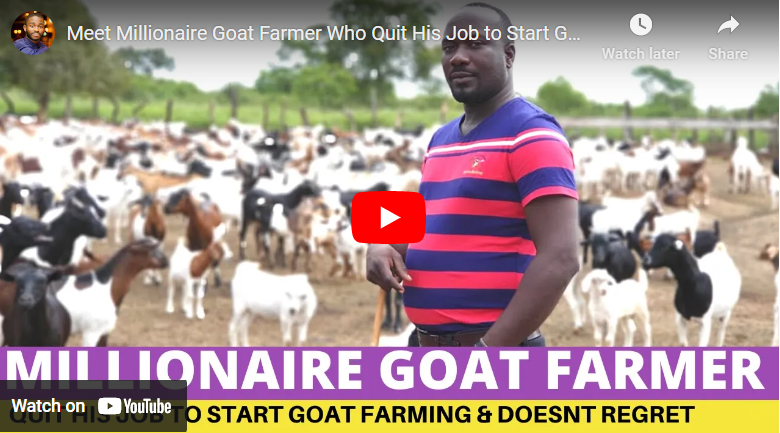Argentina’s agriculture industry plays a significant role in the country’s economy, contributing around 6% of the country’s GDP and employing more than 10% of the workforce.
Argentina is a major agricultural exporter, with its crops reaching markets all over the world. It is one of the largest producers of crops like soybeans, wheat, and corn, which are among the most essential commodities in the global food supply chain.
Some of the richest farmers in Argentina today are Simmar Pal Singh and Gustavo Grobocopatel.
The country’s fertile soil, favorable climate, and extensive irrigation systems have made it an ideal location for agricultural production. The success of the agriculture industry in Argentina has been a key factor in driving the country’s economic growth and development over the years.
Richest Farmers In Argentina
The richest farmers in Argentina are some of the wealthiest individuals in the country, with a combined net worth in the billions.
Read Also: Richest Sikh Farmers In California
They are mainly involved in the production of crops like soybeans, wheat, and corn, and have established large agribusinesses that operate both domestically and internationally.
Their success in the agriculture industry has made them significant contributors to Argentina’s economy.
Read Also: Richest Poultry Farmer In The World
#1. Simmar Pal Singh
Farming Niche: Crop Farming
Simmar Pal Singh is an Indian entrepreneur who has gained considerable wealth as a farmer in Argentina.
In 2005, he began his agricultural career in Argentina as he worked to establish a peanut procurement business for the global commodity company Olam International.
As his business expanded, he became a major player in the rice, soybean, and corn industries, earning the nickname “uncrowned king” of these crops in South America.
Read Also: Richest Poultry Farmer In South Africa
His company now cultivates peanuts, alubias, soybeans, corn, and rice on more than 40,000 hectares of land across various provinces in Argentina.
Singh has a team of 140 employees working in his processing plants, mostly made up of locals, and has earned their respect through his hard work, dynamism, and pleasant management style.
Read Also: Top Richest Farmers In Botswana
His net worth, estimated to be in the billions as of 2021, makes him one of Argentina’s wealthiest individuals.
He has 10,000 hectares of soybean and corn farms, 20,000 hectares of peanut farms, and he has leased 1,700 hectares of land in the province of Entre Rios for rice farming.
Read Also: Top 5 Richest Poultry Farmer In Nigeria
Singh has contributed significantly to Argentina’s agriculture industry and economy, with Olam International becoming one of the world’s largest rice traders under his leadership.
#2. Gustavo Grobocopatel
Farming Niche: Crop Farming
Gustavo Grobocopatel is an affluent farmer in Argentina who is the CEO of Grupo Los Grobo, a company that specializes in producing soybeans, wheat, and maize. He is vastly known as
He obtained an Agronomy degree from the Universidad de Buenos Aires in 1984 and studied European Production Systems and Agriculture at Iowa State University in 2000.
Read Also: Top 5 Richest Poultry Farmer In Kenya
Grobocopatel is recognized for transforming his family’s modest business into an international enterprise that farms up to 350,000 hectares and earns over $1 billion in revenue.
Grupo Los Grobo’s business model is based on renting land, providing inputs to farmers, and storing and trading grains.
In recent years, the company has encountered difficulties, with Grobocopatel possessing only 25% of the company’s stocks and major shareholders being investment funds. Grobocopatel’s net worth is estimated to be $1.2 billion by Forbes.
Read Also: Richest Poultry Farmer In Ghana
He is considered one of Argentina’s most influential business leaders and a trailblazer in the country’s soya industry.
Despite his success, Grobocopatel remains humble and often attributes his achievements to the hard work and dedication of his team.
Write on the following headings
Profitability of Farming in Argentina
Farming in Argentina is highly profitable, with the country being a major exporter of agricultural commodities such as soybeans, wheat, corn, and beef.
The favorable climate and abundant land resources make Argentina an ideal place for agriculture.
Read Also: Top 5 Richest Goat Farmers In Uganda
The low labor costs and the government’s support for the agricultural sector also contribute to the high profitability of farming in Argentina.
Farming Systems Used by these Richest Farmers
The richest farmers in Argentina did not become rich overnight. However, there were strategies they employed to become successful.
- Crop Production: Argentina’s richest farmers also engage in crop production. They grow a variety of crops, including soybeans, corn, wheat, and sunflowers.
- Dairy Farming: Dairy farming is another common farming system used by Argentina’s richest farmers. They produce milk and other dairy products, such as cheese and butter.
- Irrigation Farming: Irrigation farming is a technique that involves artificially watering crops to improve yields. Many of Argentina’s richest farmers use irrigation farming to grow crops in arid regions.
- Organic Farming: Organic farming is a technique that involves using natural fertilizers and pest control methods instead of synthetic chemicals. Many of Argentina’s richest farmers practice organic farming to appeal to consumers who are concerned about the environment.
- Agribusiness: Agribusiness involves the production, processing, and distribution of agricultural products. Many of Argentina’s richest farmers are involved in agribusiness, owning large-scale processing plants and distribution networks.
Read Also: Top 5 Richest Pig Farmer In Kenya
Successful Strategies of the Richest Farmers in Argentina
The richest farmers in Argentina use several successful strategies to maximize their profits. They diversify their crops, invest in technology, use advanced farming systems, and collaborate with other farmers to share knowledge and resources.
They also focus on improving the quality of their products to command higher prices in the market.
Factors that Contribute to Farming Success in Argentina
Several factors contribute to farming success in Argentina. They include the following:
- Favorable Climate: Argentina has a diverse climate that is conducive to a variety of crops, including soybeans, wheat, corn, and beef. The country’s climate allows for multiple cropping seasons, which increases agricultural productivity.
- Access to Technology and Innovation: Argentina has access to advanced farming technology and innovation, which enables farmers to increase efficiency, reduce input costs, and improve yields.
- Abundant Land Resources: Argentina has vast land resources suitable for agricultural production, with over 60% of the country’s land dedicated to agriculture.
- Low Labor Costs: Argentina has relatively low labor costs, which reduce input costs and increase profitability.
- Government Support for the Agricultural Sector: The government of Argentina has policies and programs that support the agricultural sector, such as subsidies for crop insurance and access to credit.
- Export Opportunities: Argentina has access to major export markets worldwide, which provides an opportunity for farmers to sell their products at competitive prices.
- Skilled Labor Force: Argentina has a skilled labor force in the agricultural sector, with a high level of education and training in agriculture.
Read Also: Top 12 Richest Farmers In The World
Challenges of Farming in Argentina
Despite the high profitability of farming in Argentina, farmers also face several challenges. They include the following:
- Economic Instability: Argentina has a history of economic instability, with high inflation rates and devaluation of the currency, which makes it difficult for farmers to plan and invest in their operations.
- Government Policies: The government’s policies and regulations, such as taxes and export quotas, can significantly impact the agricultural sector’s profitability. Changes in policies can affect the farmers’ ability to sell their products and access markets, leading to losses.
- Climate Change: Climate change has led to extreme weather events such as droughts and floods, which affect crop yields and production. These events can also cause significant damage to infrastructure and equipment, leading to financial losses for farmers.
- Infrastructure: Lack of infrastructure such as roads, ports, and storage facilities can make it difficult for farmers to transport and store their products, leading to losses due to spoilage and transportation costs.
- Land Use: Land use conflicts, including land grabs and disputes between farmers and indigenous communities, can disrupt farming activities and lead to financial losses.
- Input Costs: The cost of inputs such as fertilizers, seeds, and fuel can be high, affecting the profitability of farming operations.
- Labor Costs: While labor costs are generally low in Argentina, labor shortages can occur during peak seasons, leading to delays in planting and harvesting, which can affect crop yields and profitability.
Read Also: Top 5 Richest Famers In America
Lucrativeness of Farming in America
Farming in America is highly lucrative, with the United States being the world’s largest agricultural producer and exporter.
Other countries such as Brazil, Canada, and Argentina are also major players in the agricultural sector.
The favorable climate, access to advanced technology, and abundant land resources make farming in America highly profitable.
Read Also: Top 12 Richest Farmers In Australia
However, farmers also face challenges such as climate change, market volatility, and government policies that affect the agricultural sector’s profitability.
Conclusion
The agriculture sector in Argentina has been a key driver of economic growth and development for the country. While there are many successful farmers in Argentina, the richest farmers are those who have invested heavily in modern technology and sustainable farming practices.
These farmers have been able to increase their yields and profits, contributing significantly to the country’s overall agricultural output. However, it’s important to note that the concentration of wealth in the hands of a few farmers raises concerns about income inequality and the need for policies to promote inclusive and sustainable agriculture.



